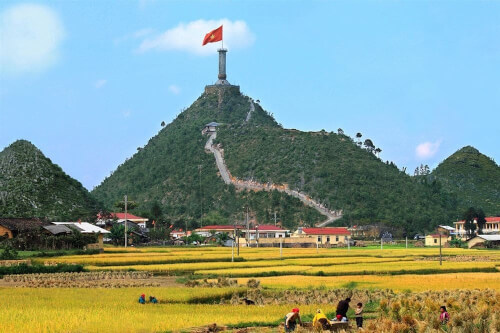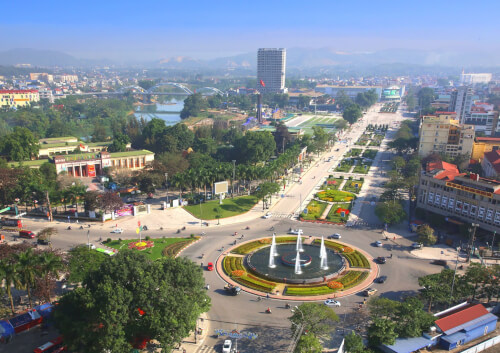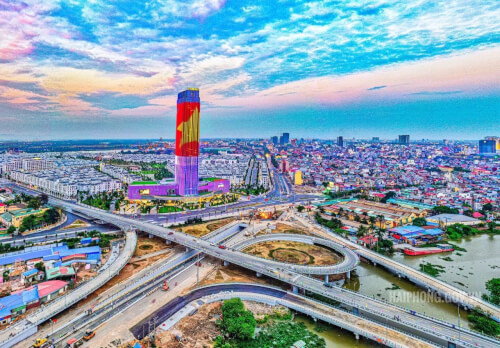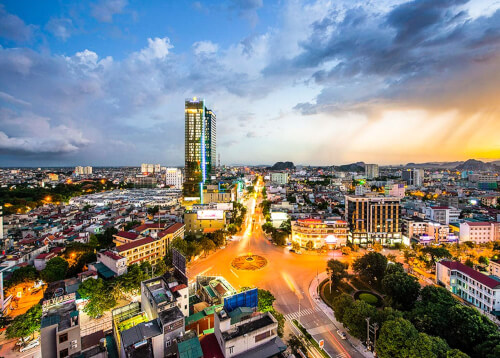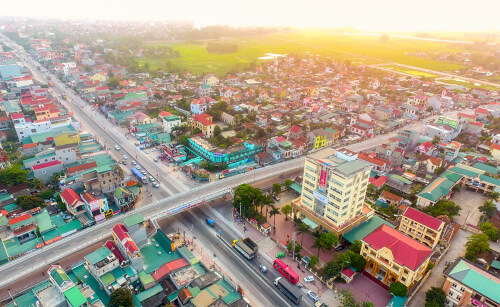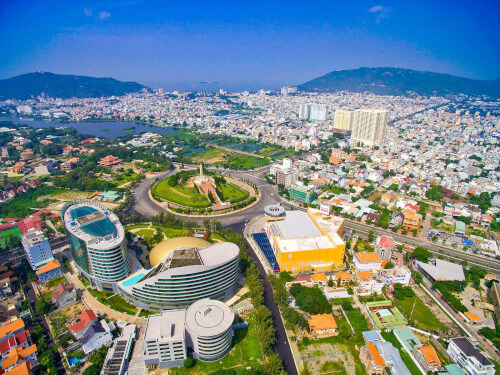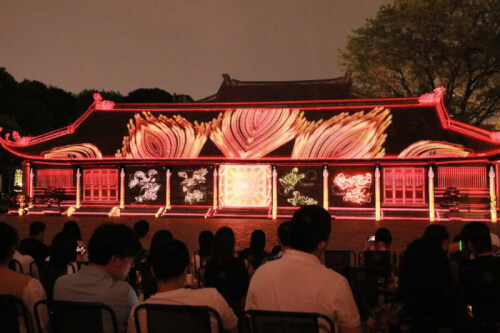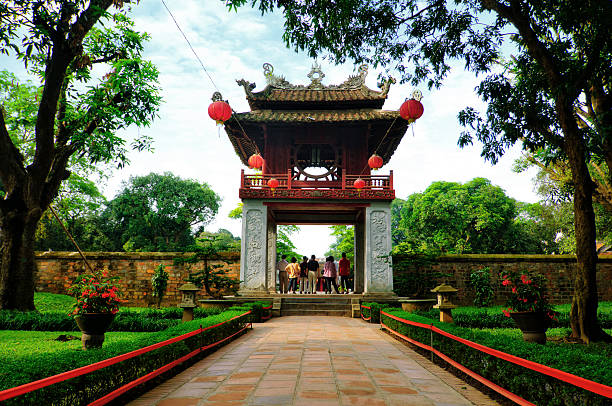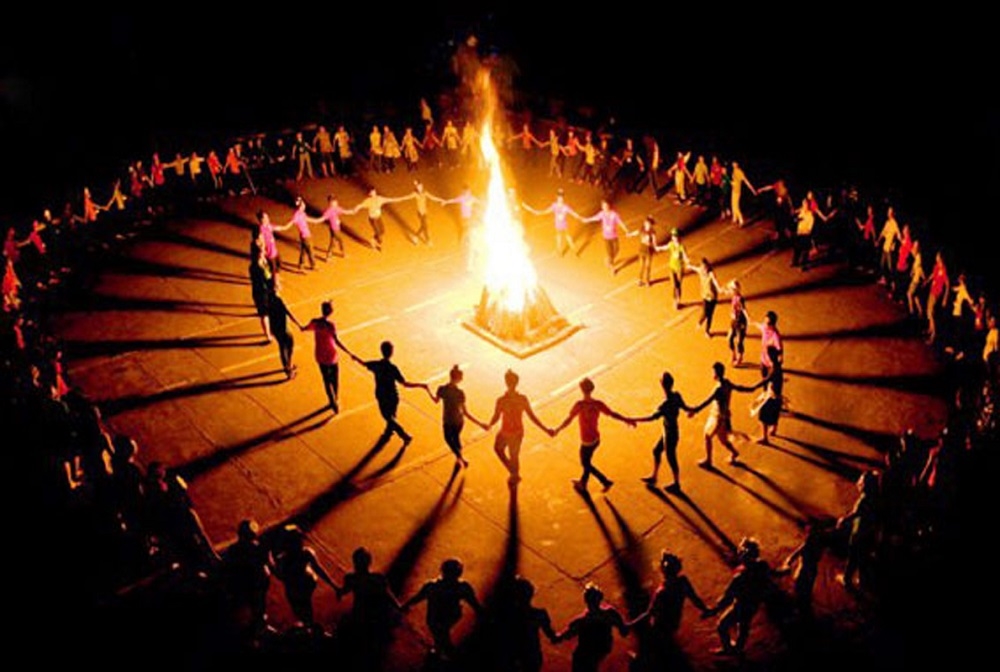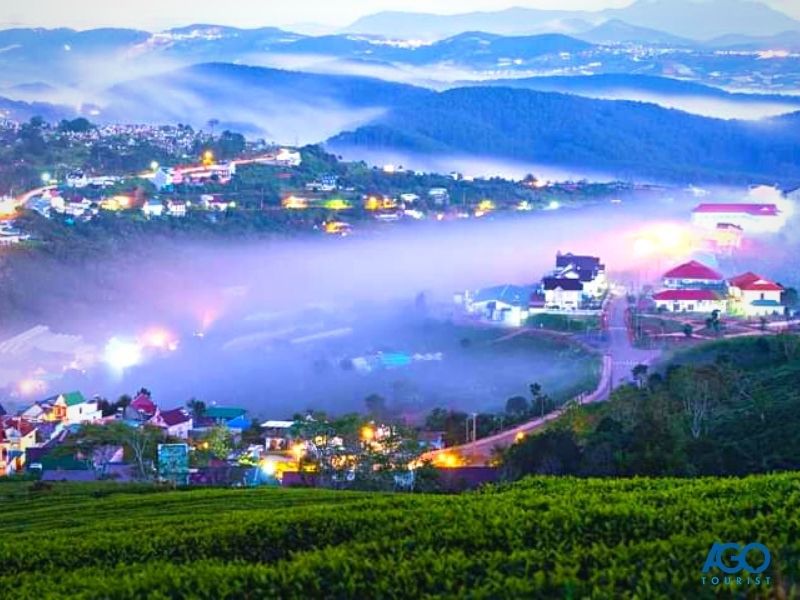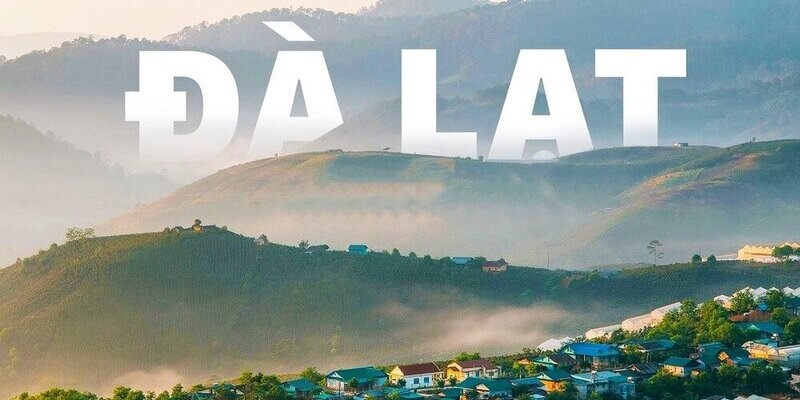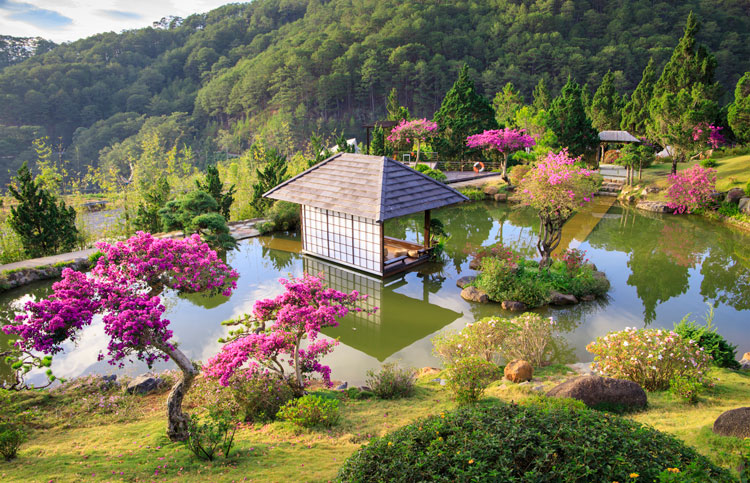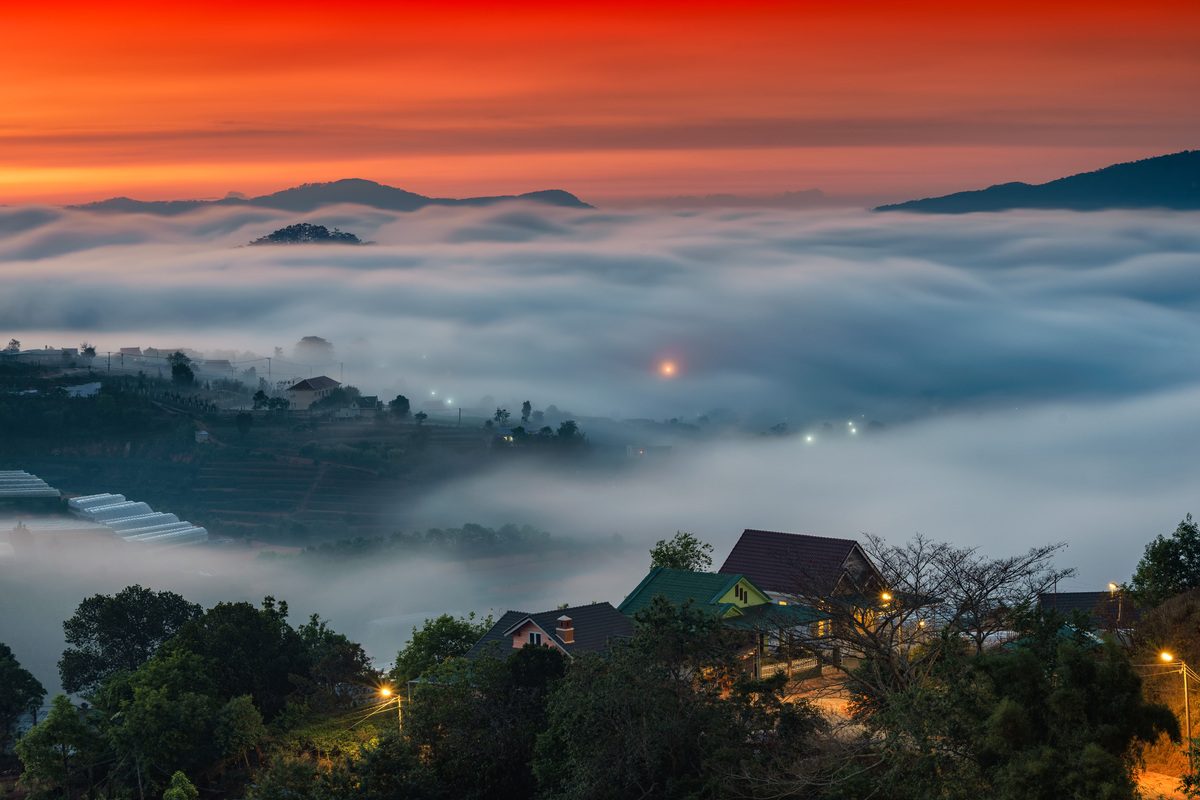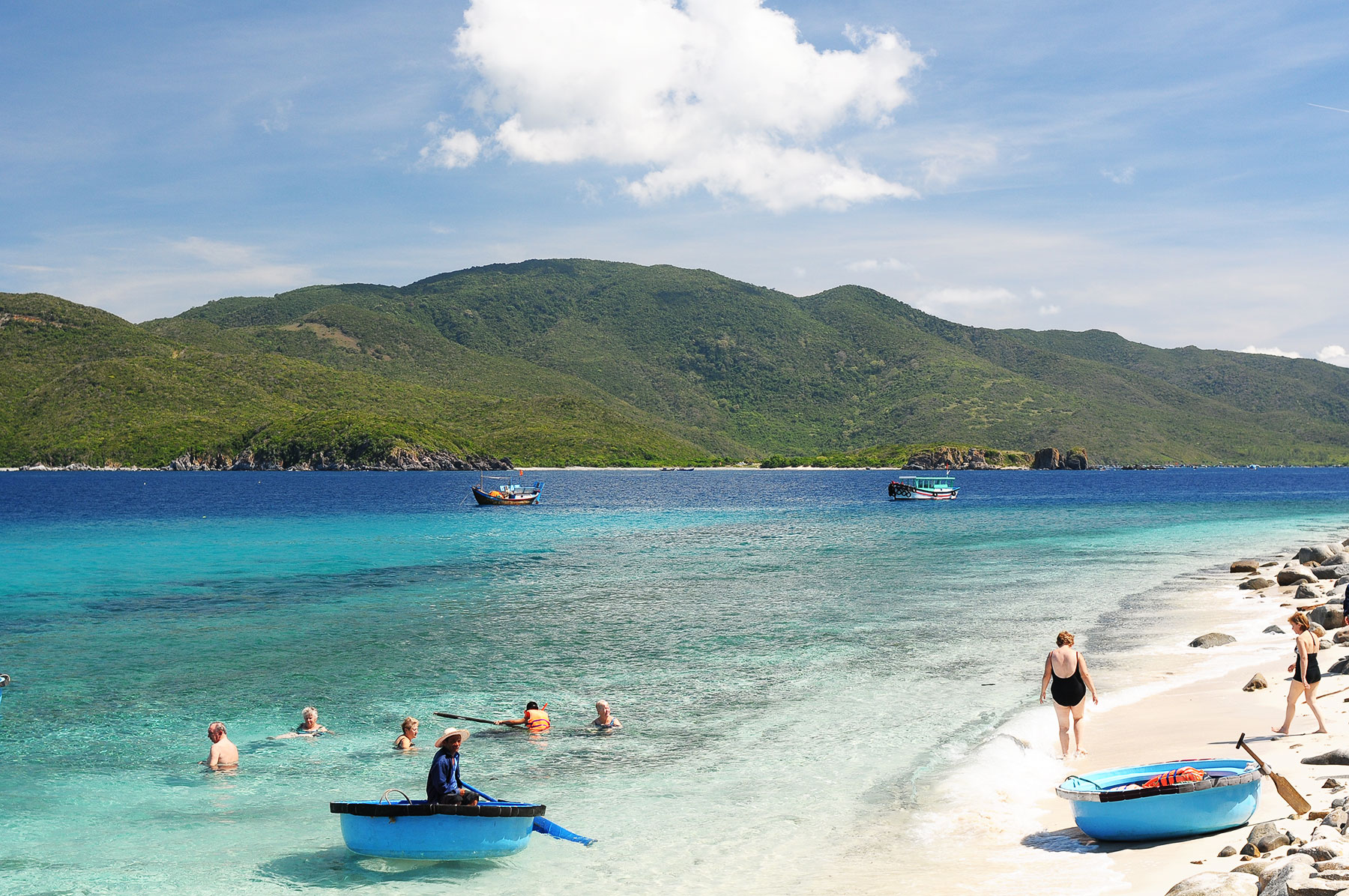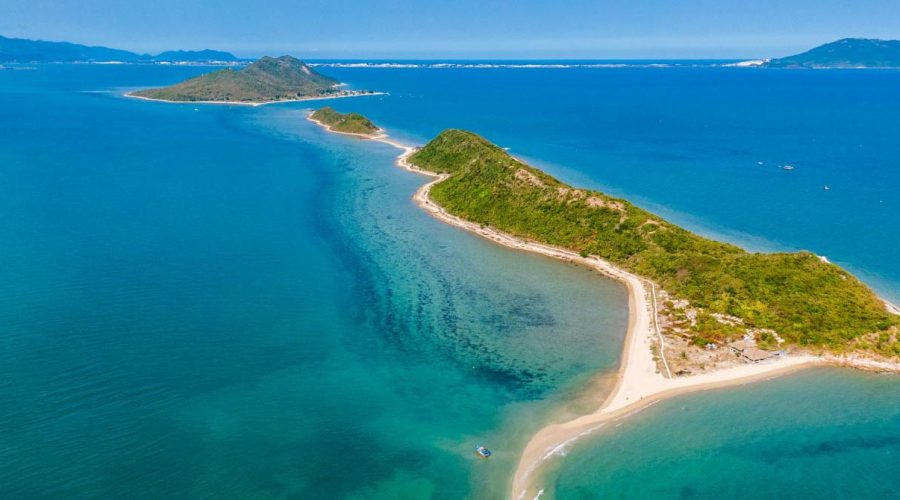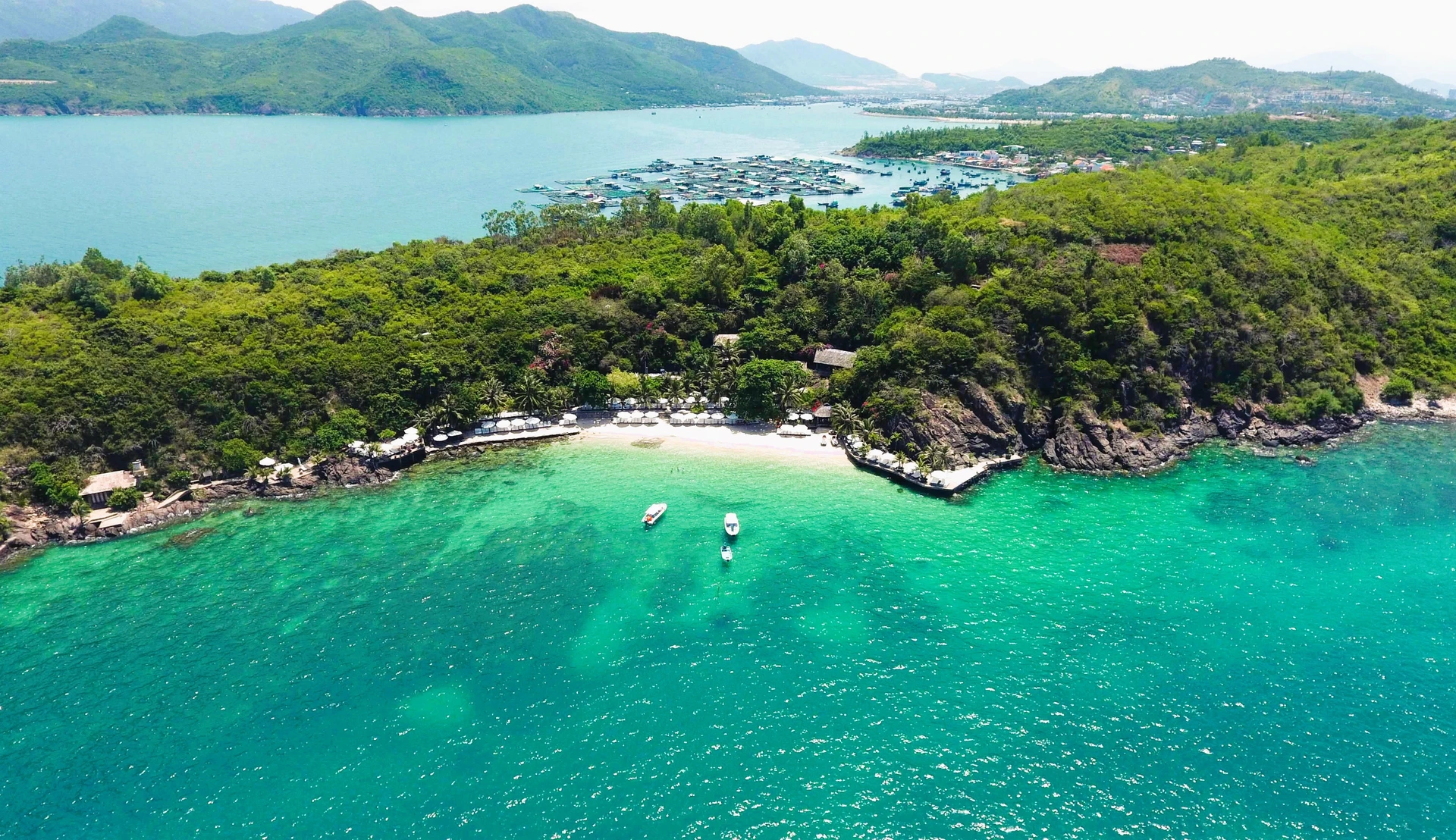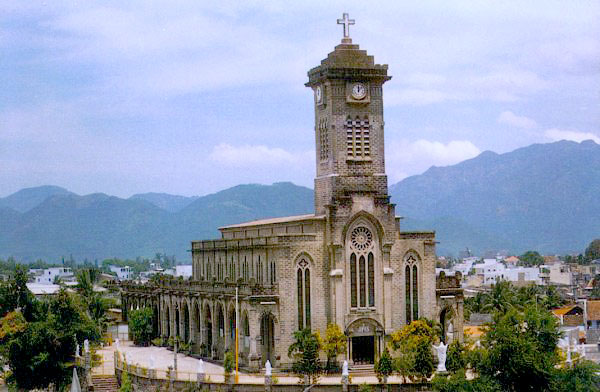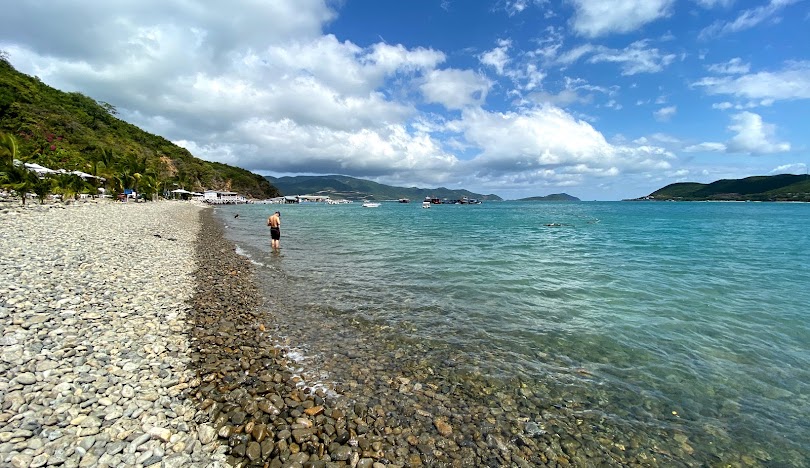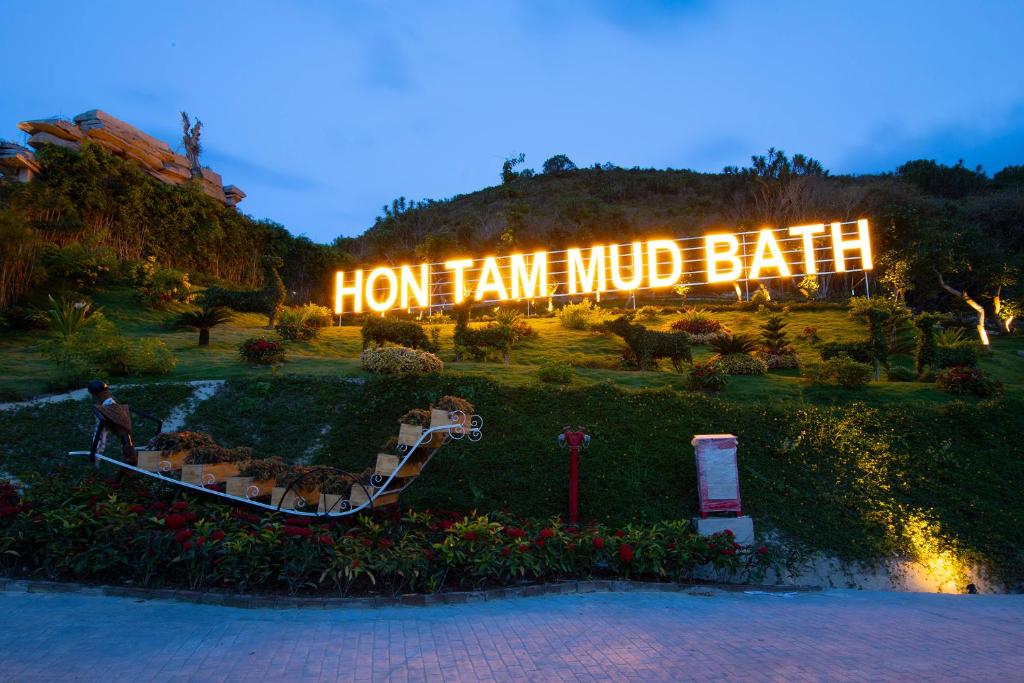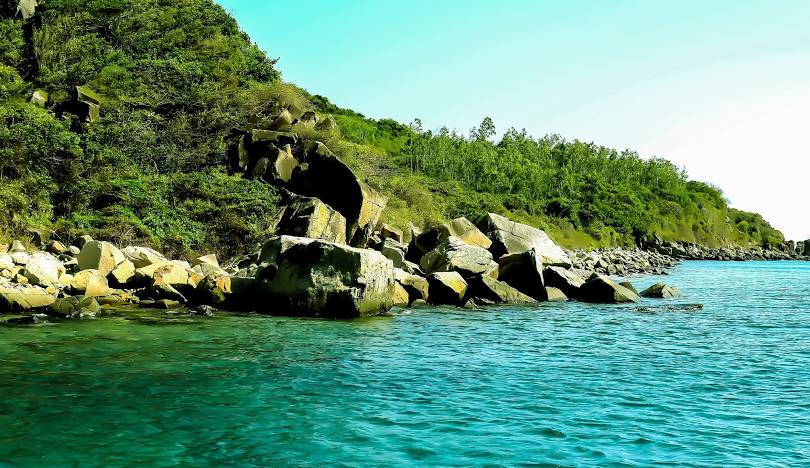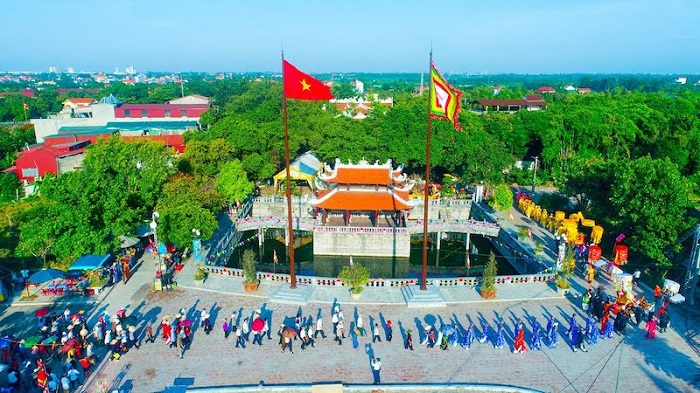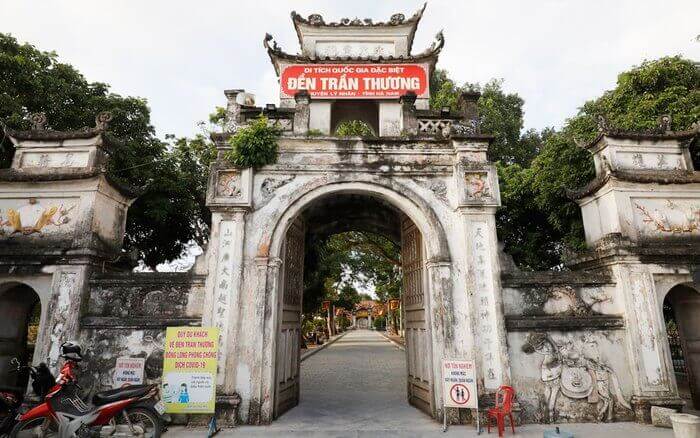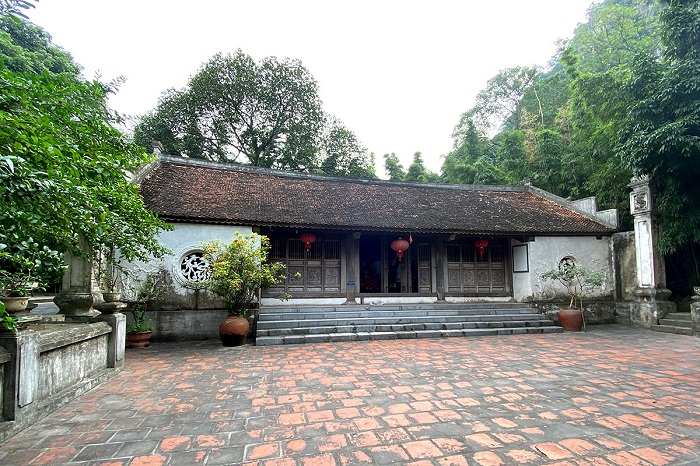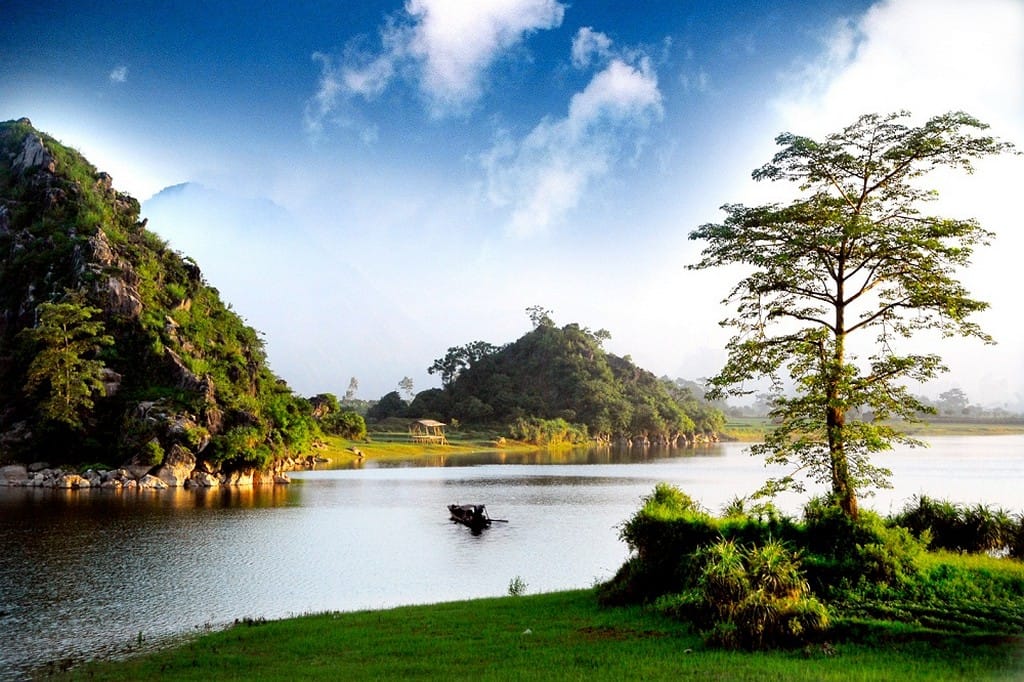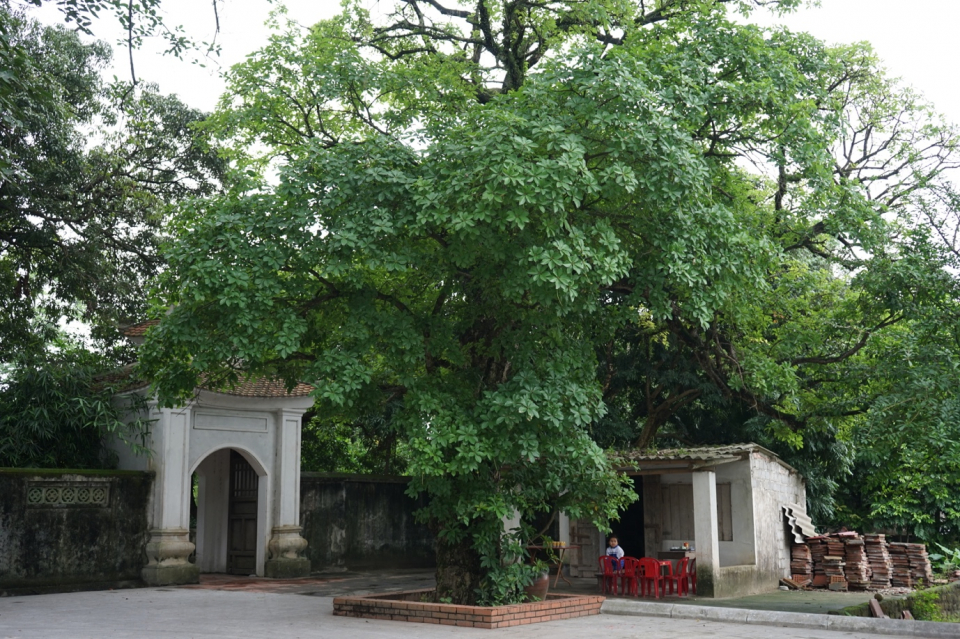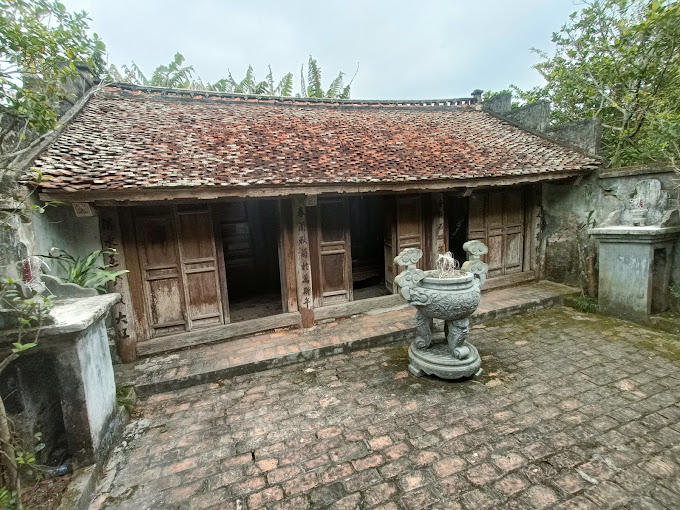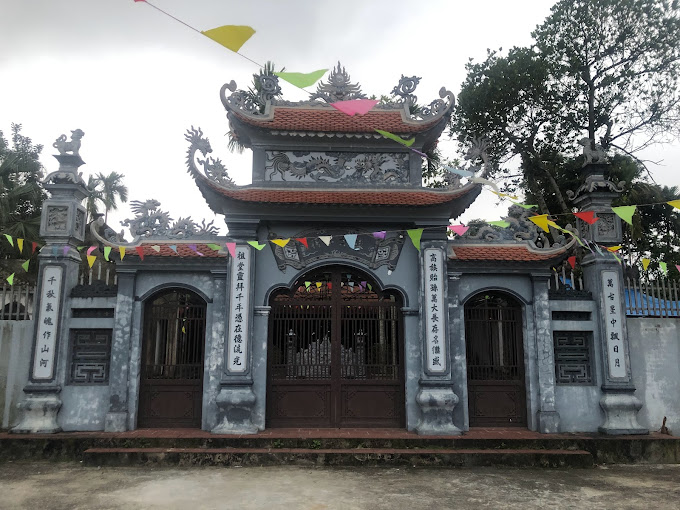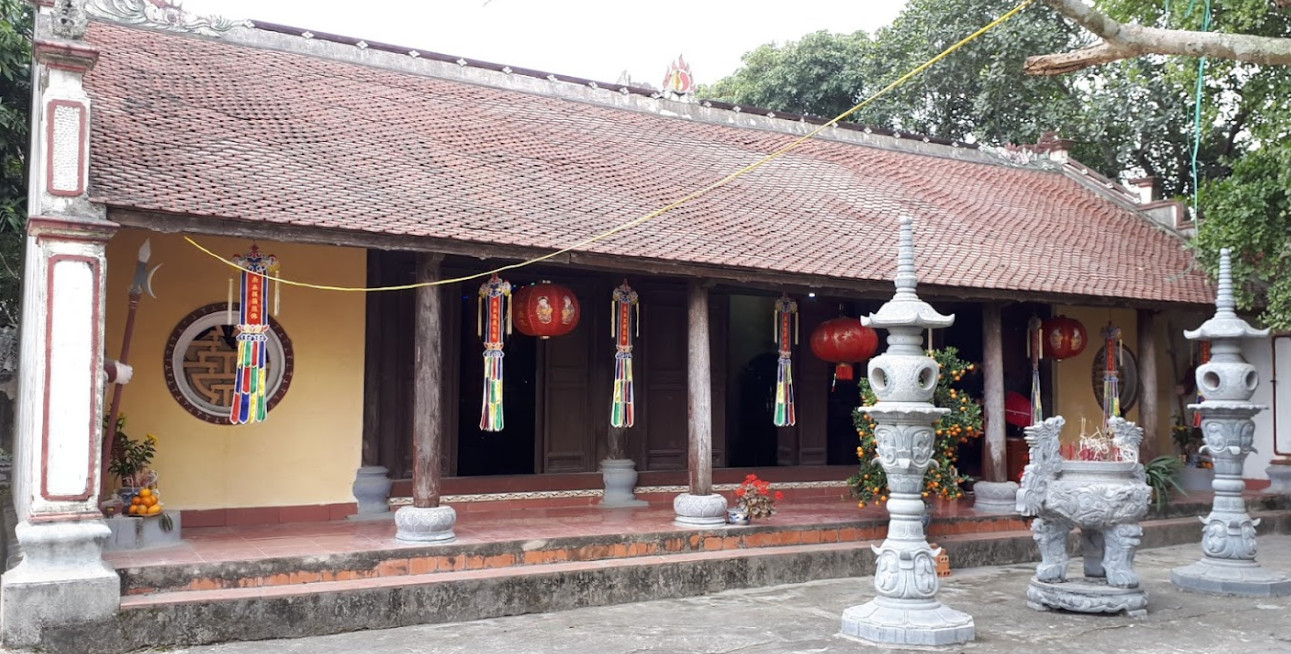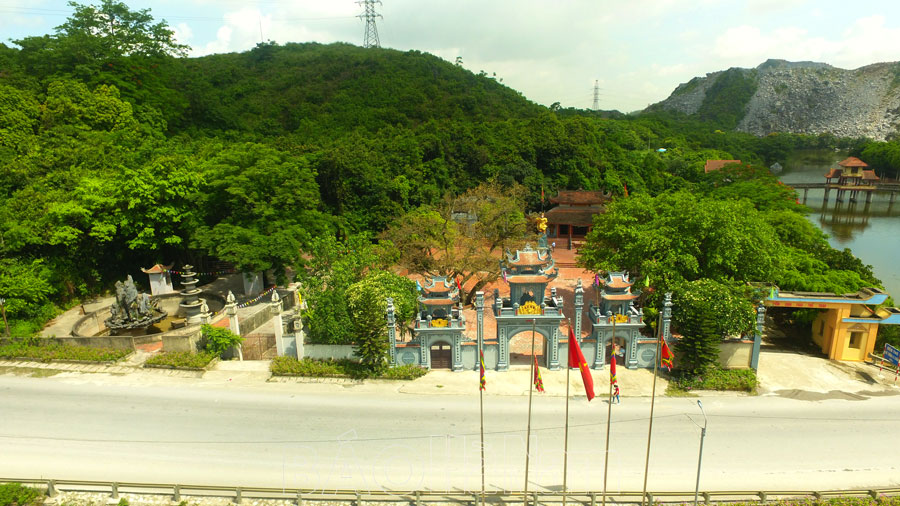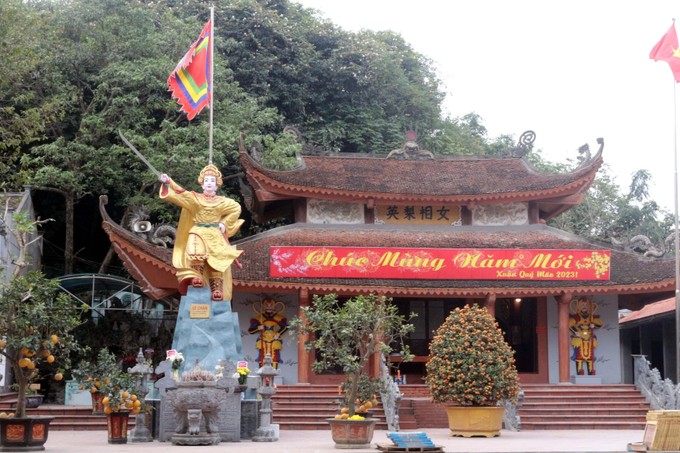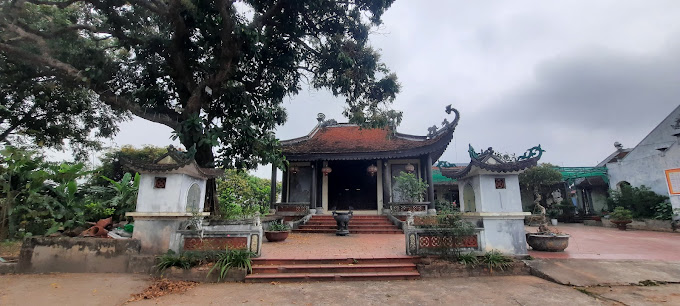The relics in Ha Nam promise to bring you unique and interesting discovery experiences. When visiting Ha Nam, don't miss the opportunity to visit historical places that preserve unique cultural values and stories about this land.
Ha Nam - a land rich in cultural and historical traditions, possessing many notable historical relics. Each monument is not only an architectural work but also a living witness of historical events, reflecting the development and cultural identity of this place. In this article, 63Stravel will explore historical sites in Ha Nam that everyone can refer to.
Top 16 famous historical sites in Ha Nam that you should not miss
Immediately save the list of historical relics in Ha Nam below to explore and experience the cultural values and heroic history of the nation.
Long Doi Pagoda (Doi Son)
Doi Son Pagoda is one of the prominent spiritual destinations in Ha Nam, only about 50km south of Hanoi. With a history of more than 1,000 years, the pagoda is located on Doi Mountain, looking like a large dragon facing Thang Long citadel. Also known as Dien Linh Tu or Long Doi Son Pagoda, the pagoda owns a large area, leaning against Diep Mountain and surrounded by three rivers.
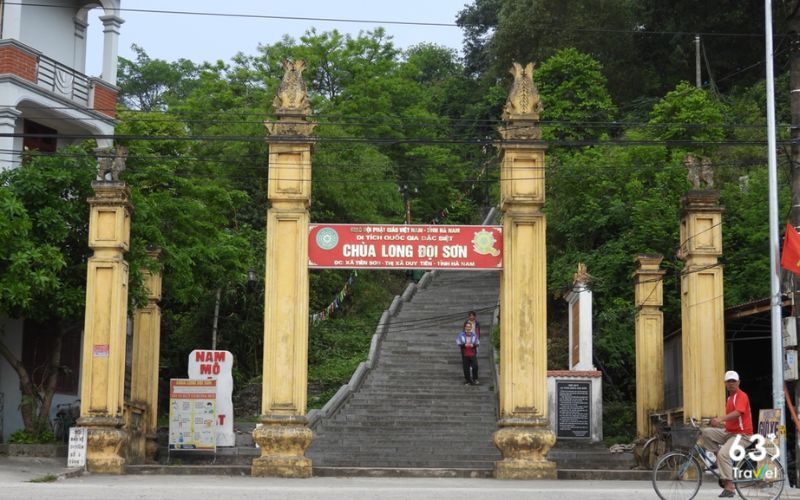
Long Doi Son - Explore the beauty of an ancient pagoda nearly 1000 years old in Ha Nam
To get to the temple, visitors will have to climb nearly 400 stone steps, amidst the cool shade of trees, creating a peaceful spiritual journey. The pagoda is not only a place of pilgrimage but also a venue for many unique cultural festivals such as the Doi Son Tich Dien Festival, which has been recognized as a National Intangible Cultural Heritage.
The architecture of Doi Son Pagoda is impressive with works such as the main hall, Tam Quan building and human chess board. Stepping through the three-entrance gate, you will see the Sung Thien Dien Linh stele, recording the contributions of King Ly Nhan Tong in building the pagoda. The sacred space of the pagoda is also adorned with the Three Jewels, a place to worship Buddhas and important historical figures.
Ba Danh Pagoda
Ticket price: 30,000 VND/person
Ba Danh Pagoda, also known as Bao Son Tu, has long become a symbol of the proverb "as empty as Ba Danh Pagoda," attracting the curiosity of many people. This pagoda was built in the 7th century, located in Ha Nam and has undergone a major restoration under the reign of Le Thanh Tong, bringing it to its current spacious appearance.
The pagoda worships Man Nuong, the goddess who brings good rain and good harvests, along with many Buddhas and Bodhisattvas, demonstrating the Mahayana tradition. In addition, the pagoda also preserves statues related to Taoism, creating diversity in beliefs.
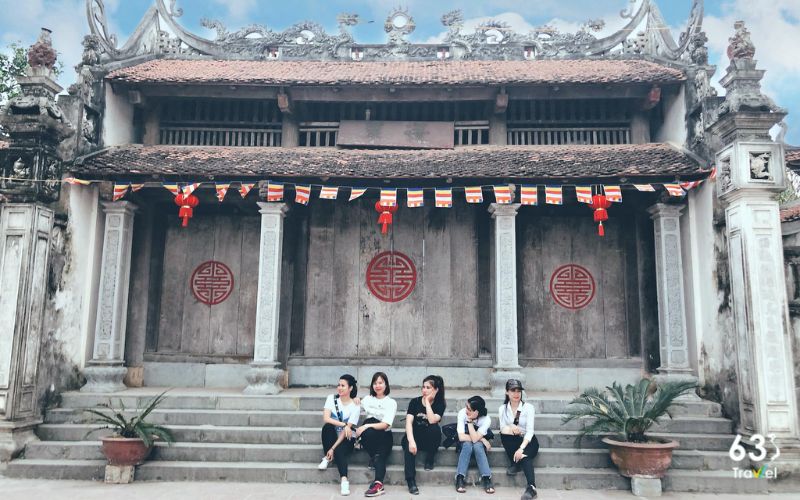
Ba Danh Pagoda - the most beautiful ancient architecture in Ha Nam
Not only is it a place of worship, Ba Danh pagoda also plays an important role in revolutionary history, once being the base of the guerrillas from 1946 to 1950. In 2004, the pagoda was recognized as a level historical relic. Country, and was upgraded in 2007, becoming an attractive destination for tourists.
The pagoda stretches over an area of 10 hectares, with an impressive three-entrance gate built five steps high and a three-compartment, two-story architecture. The airy campus, green trees and gentle Day River create a peaceful atmosphere for everyone to visit.
Cay Thi Pagoda
Cay Thi Pagoda - a precious gem in the heart of Ha Nam, has put on a splendid beauty since 2020. Located in Che Trinh village, Thanh Tam commune, Thanh Liem district, this pagoda is not only a spiritual destination. but also an ideal place for you to find peace in a noisy life.
Only about 60km from Hanoi, you can easily reach Cay Thi Pagoda after just 2 hours of driving. Here, besides admiring the unique architectural beauty, you also have the opportunity to explore many other attractive tourist attractions such as Tam Chuc pagoda, Ba Kien house and enjoy the famous braised fish dish.
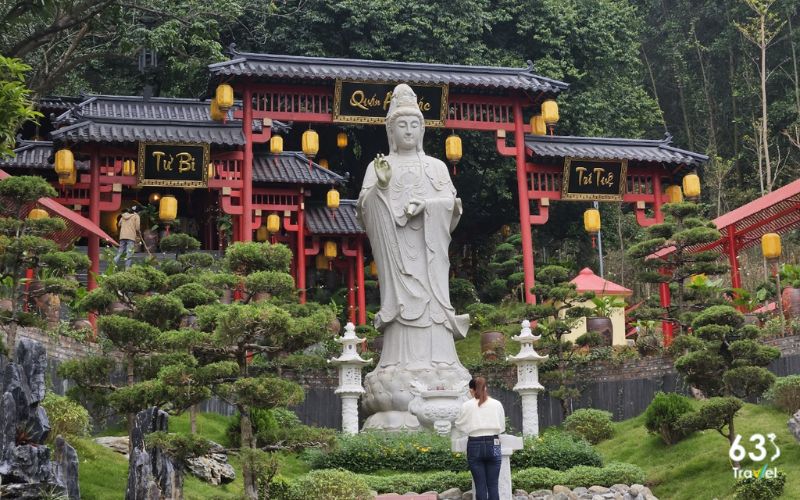
Cay Thi Pagoda - sacred ancient pagoda, peaceful space
The temple is open free of charge all day, especially in the early morning, you will have the opportunity to witness monks practicing meditation, bringing a profound spiritual experience. The name Cay Thi Pagoda comes from the hundreds of years old Thi tree next to it, reminiscent of the beauty of Dia Tang Phi Lai Tu Pagoda.
The pagoda's architecture is a delicate interference between Japanese and Vietnamese styles, located in a quiet natural space, next to the mausoleum of Minister Truong Cong Giai and the temple of martyrs on Chua Mountain. The temple is surrounded by Japanese grass and pine trees, with a white gravel yard, creating a charming scene, helping you forget your daily worries.
Cay Thi Pagoda is not only a spiritual destination but also an ideal place to re-energize the soul. Come and experience the wonderful peace here! Every detail at the pagoda is carefully taken care of, from the green stone walkway to the delicate bonsai trees, bringing a feeling of serenity and serenity to visitors.
Lung Xuyen Communal House
Lung Xuyen communal house, also known as Dinh Gao, is located in Lung Xuyen village, Yen Bac commune, Duy Tien district, Ha Nam province. Located on high ground at the beginning of the village, near the inter-commune road, the communal house faces south, in front of the green rice fields, creating an airy space.
The communal house was built in the style of a nail with a front hall of 5 rooms and a harem of 3 rooms, with a male-tiled roof. The carving art here is very sophisticated, with themes such as rolling water dragons, pine buds and dragon gamete patterns, imbued with rich cultural value.
In 1927, the communal house was the place where the meeting to establish the first Vietnamese Revolutionary Youth Comrades Association cell of Ha Nam province took place. By November 1929, the Indochina Communist Party cell was also established here.
During the resistance period, Lung Xuyen communal house became an important revolutionary base. Many historical events took place here, such as the uprising meeting to seize power in August 1945, where three armed squads took the oath in front of the national flag.
Comrade Nguyen Huu Tien's memorial house was built on the old house's foundation, and is currently a place to commemorate and welcome visitors. Lung Xuyen Communal House with its memorial house is not only a historical relic but also a spiritual destination, contributing to educating revolutionary traditions for the young generation and is a meaningful tourist destination of Duy Tien district and Ha Nam province. .
Tran Thuong Temple
Tran Thuong Temple (also known as Tran Temple) is a place to worship Saint Tran Hung Dao, located on the land that he used as a food warehouse during the second resistance war against the Mongols. The temple is located on the banks of the Red River, in a peaceful setting with a jade well where Tran Hung Dao rests.
With its pristine beauty, Tran Thuong Temple is the pride of the nation, famous for the song "Ca Nhan Dao, Tran Thuong rice". This place was once the center of 6 water streams, the link between the Red River and the East Sea, and was an important food storage location.
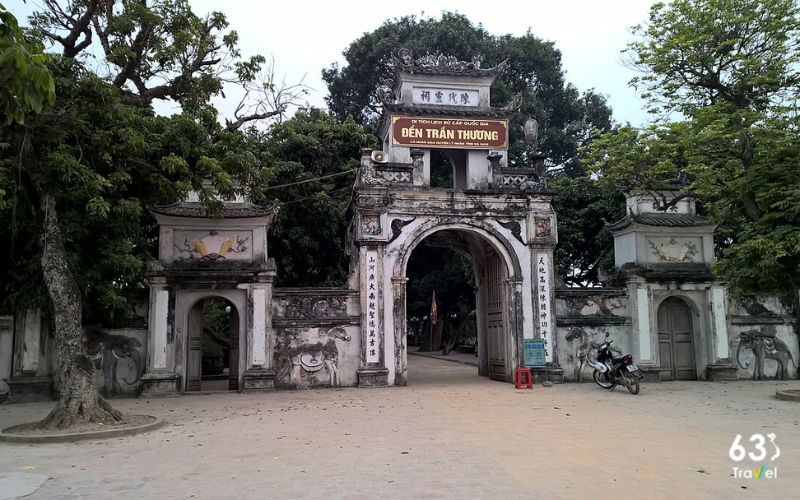
Tran Thuong Temple - a sacred temple of more than 7 centuries in Ha Nam
According to Dai Viet Su Ky Toan Thu, when he passed away, Tran Hung Dao instructed his descendants to cremate and bury him secretly. Today, the temple not only worships him but also preserves many precious artifacts, demonstrating artistic and historical value.
Tran Thuong Temple has beautiful architecture like a young woman on the riverbank, with the shape of a "phoenix worshiping figure". From Nghi Mon gate, visitors will pass through rows of ancient trees and beautifully paved paths. The main temple includes compartments such as the Co Lau, the Pre-Temple, the Central Palace and the Hau Palace, with an impressive overall look and many wells.
Ho Khau Well is 6.39m wide and 2.9m deep, which is the connection between the Front Temple and the Central Palace, creating a mysterious space for worship activities. The harem is only open on holidays, while the Mother Church is located separately, bringing sanctuary to this historical site. Tran Thuong Temple is not only a place of worship but also an important cultural destination of Duy Tien district and Ha Nam province.
>> See more: List of 10 most ancient historical sites in Thai Binh
Lang Dau Communal House
Lang Dau Communal House, also known as My Doi Communal House, is located in Dau village, An My commune, Binh Luc district, Ha Nam province, and is a place to worship three tutelary gods: A Dao, Nguyen Que and Nguyen Phuong - three sisters during the reign of King Le. Thai To, famous for his victories in killing enemies to save the country. In addition, the communal house also worships Bui Cong Bang and Bui Cong Minh, two doctors of the Le Dynasty who contributed to the poor by buying fields for grants.
The architecture of the communal house is in the shape of the letter Dinh, including 3 front halls and 3 back halls, with traditional and sophisticated beauty. This place also preserves many precious relics such as altar thrones, worship statues, and bronze incense bowls dating from the 19th century, proving their cultural and artistic value.
In particular, My Doi Communal House is not only a historical relic but also an important revolutionary address. In 1930, the Communist Party cell of My Tho commune was established here, marking a turning point in local history. The communal house was classified as a historical and cultural relic by the State in 1998, affirming its position in the community's consciousness.
Lanh Giang Temple
Lanh Giang Temple, also known as Lanh Temple, is a famous spiritual destination with a rich history, a place to worship the three famous gods of the Pham family during the 18th Hung King's reign, the Third Quan Lon, and Tien Dung. Princess and Chu Dong Tu. These three famous gods are outstanding generals who have made great contributions in fighting the Shu invaders, protecting the country, and are also the children of the Eight Sea Dragon King and Lady Quy. Not only did they help King Hung fight against the invaders Thuc Phan, they also assisted Princess Tien Dung and her husband in their life's journey.
After the country was peaceful, famous gods continued to devote their efforts to developing production, bringing a prosperous life to the people. According to legend, Quan De III died in a fierce battle, his body was split in half and his body drifted to Yen Lac village, where people built Lanh Giang temple to commemorate his merits. Lanh Giang Temple is not only a majestic and majestic architectural work, but also preserves many worshiping artifacts of high artistic value. On November 5, 1996, the temple was recognized by the Ministry of Culture and Information as a national historical and cultural relic, affirming its position as an important cultural destination.
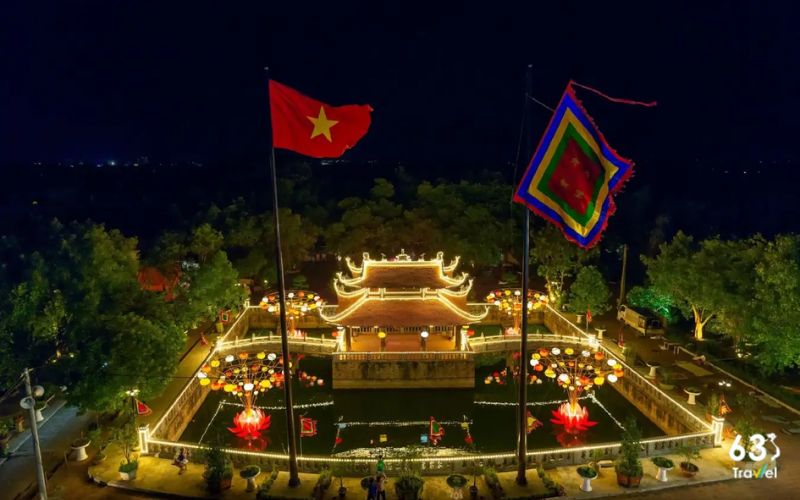
Lanh Giang Temple - Where spiritual relics are kept
The architecture of Lanh Giang Temple stands out with three main buildings, including 14 large and small compartments built in the shape of the letter Cong, creating a spacious space within the campus of up to 3,000m². Although there are no hills or mountains, the area around the temple is surrounded by the green landscape of longan trees, lotus ponds, and water wharves, evoking a bold image of a land of outstanding spiritual people.
On both sides of the temple are guest houses, creating a harmonious symmetry with the surrounding landscape. Trung Duong Building especially attracts attention with its two-story overlapping architecture and eight soft curved roofs.
The talent of ancient artisans is clearly shown through every detail of the exquisite carvings on the columns and doors with the images of the four sacred animals: Dragon, Lan, Quy, Phung, both dignified, ancient and full of vitality. . The temple door faces Nhi Ha River (Red River), with a clear view of the vast green rice fields to the west, creating a peaceful scene amid the afternoon blue smoke.
The north side of the temple is the temple worshiping Princess Ngoc Hoa, Tien Dung's younger sister, while the south borders Nha Xa village and the communal house worshiping Tran Khanh Du. Although there are no documents confirming the exact time of construction, Chinese characters engraved on the roof of the second building show that the temple was last restored in 1944, the 18th year of Bao Dai.
In the Lanh Giang temple relic complex, there is also Cua Song temple (also known as Co temple) about 50m to the east. This is a massive architectural work with a curved roof and a facade facing the Red River, providing a poetic landscape amidst charming water waves.
Not far to the west, across the dike, is the temple of King Le, where Emperor Le Thai To Cao is worshiped. This temple was established to mark the event of King Le's conduct and inspection of local mandarins while enforcing royal laws. Up to now, King Le's temple still retains many unique relics such as the king's garden, the raspberry area filled with dancing dragons and phoenixes, and other areas proving the heroic deeds of the king.
Ksitigarbha Phi Lai Tu Pagoda
Dia Tang Phi Lai Tu Pagoda, also known as Dung Pagoda or Phi Lai Dia Tang Pagoda, has a history of more than 1,000 years. Located on a small hill in Ninh Trung village, the pagoda stands out with the landscape of "Left dragon, right white tiger" and many valuable antiques bearing the mark of Vietnamese Buddhism.
The pagoda was once chosen by King Tran Nghe Tong as a hiding place and King Tu Duc came to pray. Through many historical ups and downs, in 2015, the pagoda was restored and renamed by Venerable Thich Minh Quang to its current name.

Ksitigarbha Phi Lai Tu Pagoda is peaceful and full of Zen in Ha Nam
The temple grounds are spacious, blending with nature, with lotus ponds, gardens and quiet meditation areas. A special highlight is the 12 circles on the white pebble background symbolizing 12 karma and a gentle message about human life.
The pagoda's architecture combines harmoniously with nature, typically the Three Jewels court with the majestic statue of Ksitigarbha, the worshiping area for 42 monks and the Pho Dong tower on top of Phi Lai, where 40 generations of patriarchs rest. The pagoda is also an ideal place for those who love reading and seeking peace of mind.
The temple worships National Cong Tran Nhu Lan
From Luong street, Cong Tran Nhu Lan district, located in Thuong Lang village, Ngoc Lu commune, Binh Luc district, Ha Nam. Built in 1681 by descendants of the Tran Nhu family. The 5-room house is made from ironwood, with spacious architecture, ironwood door system and needle-shaped roof, symbolizing the martial arts of the worshiped character.
This place also preserves many diverse worship objects, ordinations from the Later Le period and epitaphs and genealogies over 300 years old, helpful for historical research. Duke Tran Nhu Lan, born in 1563, came from a poor family, became a hero who supported the king, helped the country and its people, and made many contributions to his homeland such as repairing communal houses, pagodas, markets, and building buildings. roads, build bridges.
He was honored as the Village God while he was alive and after his death, continued to be worshiped at the village communal house. From Luong Street, Tran Nhu Lan Cong District was ranked as a National Historical Monument in 1995.
Co Vien Communal House and Pagoda
Co Vien communal house and pagoda relic area, located in Hung Cong commune, Binh Luc district, located near Chau river and Binh My town. Co Vien Communal House is a large-scale architectural work, built in the "domestic, foreign" style and imbued with the artistic style of the 17th and 18th centuries.
Architectural details such as flanking dragons, dancing phoenixes and dragon-shaped leaf motifs all demonstrate the sophisticated sculpture of the Later Le period. In particular, the communal house still retains many valuable worship objects such as tablets and thrones of the Later Le period, all elaborately carved and covered with splendid gold.
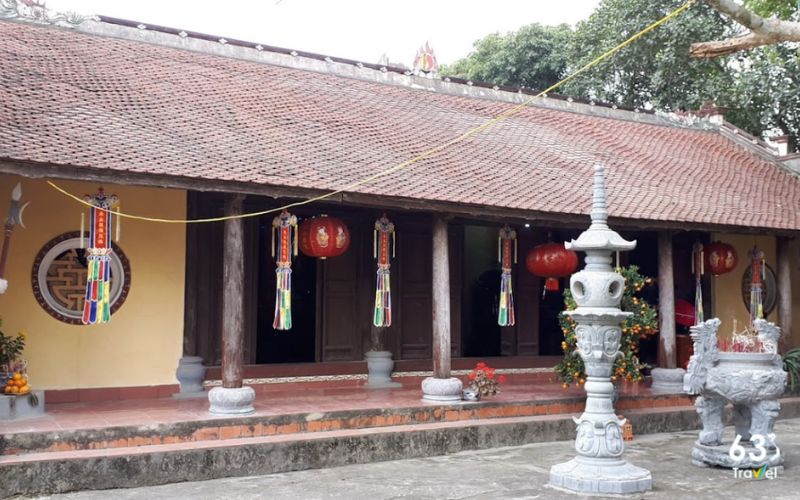
Co Vien communal house and pagoda are ranked as national relics
Co Vien Pagoda, whose literal name is "Linh Quang Tu," is located next to the communal house, with a large-scale architecture including 2 main buildings and many altar rooms, imbued with traditional style. According to legend, the pagoda dates back to the Ly Dynasty. In addition to being a place of worship, Co Vien pagoda is also an important revolutionary base, protecting cadres and hosting many meetings of the Ha Nam Provincial Party Committee during the resistance war against the French, contributing to the cause. win national independence.
From the street of poet Nguyen Khuyen
From Nguyen Khuyen street, located in Vi Ha village, Trung Luong commune, Binh Luc district, Ha Nam, about 16km from the province center. Tu Duong area is located in the middle of a romantic landscape with autumn ponds, bamboo alleys and Bui gardens, creating a peaceful village scene of the North. This is the place to worship poet Nguyen Khuyen - "Tam Nguyen Yen Do," and preserves many memorabilia such as works, horizontal panels, and parallel sentences given to him by famous artists.
Nguyen Khuyen's house has bold traditional architecture with 7 rooms, the outside is the grand altar, the inside is the harem - a special architectural style only for those who are ordained as gods. Two longan trees in front of the door and one tree on the porch were planted by Mr. Nguyen Khuyen after receiving longan seeds from the king's palace, demonstrating his success through three exams.
When entering through the main gate, visitors will encounter the couplet "Mon Tu Mon" - a teaching about discipleship, emphasizing the importance of politeness when visiting a teacher's house. The interior space is simple but dignified, displaying pens, ordinations, and the plaques "Honored Gifts" and "Two Doctors" awarded by King Tu Duc.
The temple area was built in the style of "two dragons flanking the moon" with 9 steps, but instead of placing it on the roof, Mr. Nguyen Khuyen arranged it underground - a gesture that implied resistance to the Nguyen Dynasty. Here, the royal uniform and statue of Nguyen Khuyen holding a bamboo cane are also kept, symbolizing his intelligence and calm demeanor.
Nguyen Khuyen Street has been ranked as a National Historical and Cultural Relic and is currently a tourist destination attracting many tourists. Not only because of its historical value but also because of the peaceful scenery, associated with poetic images in his works.
Phat Quang Pagoda
Phat Quang Pagoda, originally just a small pagoda nearly a hundred years old located in Du Nhan village, was built to serve the worship and worship needs of people in the area. Over time, the pagoda was degraded, but thanks to Venerable Thich Thien An, the pagoda was restored in 2015, expanding on a campus of more than 6,000 m². Many large architectural works such as lecture halls, fish ponds, tea houses, the Patriarch's house and the Tam Bao have been built, bringing the spacious and majestic appearance they have today.
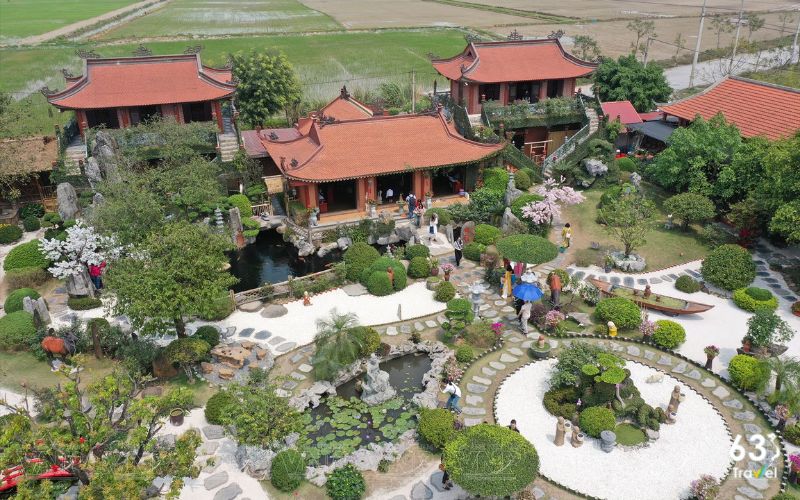
Phat Quang Pagoda Ha Nam - A unique new spiritual tourist destination
The restoration of the pagoda is not only the passion of Abbot Thich Thien An, but also has the contributions of many monks, nuns, and Buddhists at home and abroad. The monk personally wrote calligraphy, painted and decorated each small corner of the temple, creating its own unique artistic features. Visitors coming here will be impressed with the rockeries, clear blue fish ponds, elaborate bonsai and especially the stone slabs engraved with delicate calligraphy.
The temple space is airy and peaceful, bringing a gentle feeling, helping visitors temporarily forget about life's worries. When coming to the temple, visitors can sit and listen to monks preach, enjoy tea, admire flowers, and feed fish - relaxing experiences. In addition, the pagoda is also an ideal place to take commemorative photos with its harmonious and delicate natural scenery.
>> See more: Top 9+ tourist attractions in Ha Nam HOT most attractive to tourists
An Thai Dong Strike
Dong An Thai communal house, located in Tien Noi commune, Duy Tien district, Ha Nam province, is an important historical and cultural relic of the locality. The communal house was built in the Later Le period, bearing bold traditional architecture with sophisticated sculptural motifs and harmonious layout.
This is the place to worship the village's Tutelary God, the gods who protect the villagers, as well as honor ancestors who have contributed to building the country. Over the centuries, An Thai communal house has retained its majesty, becoming a spiritual gathering place and a place to organize traditional festivals, attracting a large number of tourists and people to attend.
Dinh Trieu Hoi
Trieu Hoi communal house, located in Bo De commune, Binh Luc district, Ha Nam, is a place to worship two village tutelary gods: Cao Mang - a talented general of the Tran dynasty and Tran Xuan Vinh - a second-class doctorate in the reign of Le Thanh Tong. . Legend has it that after passing his doctorate, Tran Xuan Vinh had an accident on the river, was built a temple by the villagers, and later worshiped the god Cao Mang.
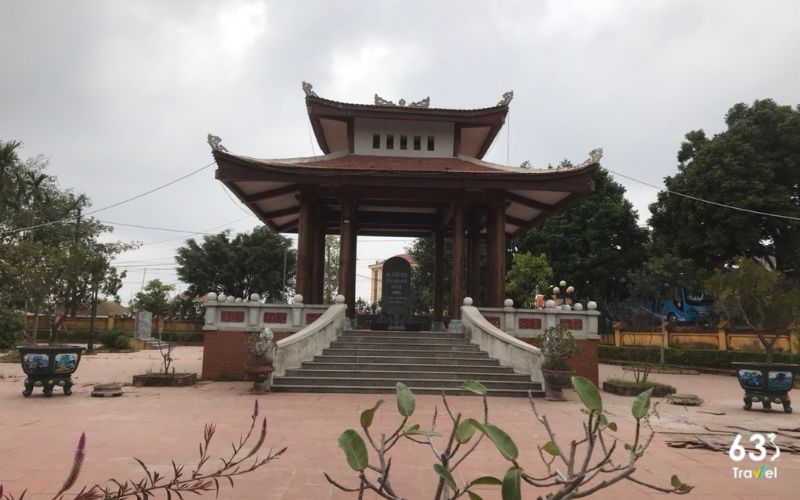
Trieu Hoi Communal House is ranked as a national relic
The architecture of the communal house is in the form of a triangle, including the front hall, the second palace and the main palace, with typical features of Vietnamese village communal house architecture. The communal house has been renovated many times, with two dragons flanking the moon, ironwood door frames and tiled floors, giving it an ancient beauty.
Trieu Hoi Communal House is not only architecturally valuable but also the place where a large protest took place on October 20, 1930, when farmers in the area protested against the feudal colonial regime and supported the Soviet Union. Nghe Tinh. This event left a strong mark on the revolutionary movement of Ha Nam, contributing to promoting the struggle movement nationwide.
Temple to worship female general Le Chan
Le Chan Temple is located in Hong Son village, Thanh Son commune, Kim Bang district, Ha Nam. The main side of the temple faces south, previously facing the Ngan River - a branch of the Day River, behind is Ong Tuong Hill. The temple's festival tradition, especially on the 13th day of the 7th lunar month, commemorating the death of General Le Chan, still attracts a large number of tourists. People from neighboring provinces come to attend, offer ceremonies and participate in games such as boat racing, climbing pontoon bridges, playing chess, and cockfighting.
Currently, Le Chan temple has been rebuilt with a complex including the main temple, shadow, Son Trang cave, guest house and auxiliary works on an area of more than 4,000m². In front of the temple is a majestic statue of General Le Chan, facing the old base. The temple has become an important spiritual destination, connected to temples of female generals in Quang Ninh and Hai Phong, and regularly has exchange activities during festivals.
In particular, the Hong Son Village Women's Drum Team with 35 members contributed to recreating the battle atmosphere, creating excitement for the festival. The Temple of Female General Le Chan not only has historical value in the resistance war to protect the country, but is also a notable spiritual tourist destination, associated with efforts to preserve culture and educate the young generation about traditions. national system.
Historical Relic of Lat Son Base
Lat Son base - where Female General Le Chan established a base and died in the Hai Ba Trung uprising in 40 AD, is one of the important historical places of our nation. The strategic location of the base with its back against the bow-shaped mountain range and in front of the Ngan and Day rivers helped Female General Le Chan organize defense and fight against the Eastern Han army.
Here, she led the resistance army in many fierce battles, especially the final battle at Dong Loan valley. When her forces were weakened, Female General Le Chan committed suicide to avoid falling into the hands of the enemy.
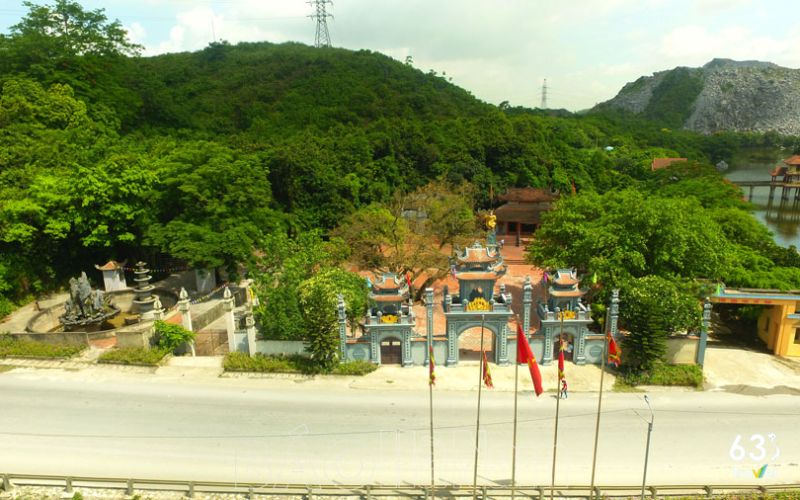
Lat Son Base Historical Relics Ranked as National Relics
Today, the La Son region with landmarks such as Le Chan Temple, Thanh Chan Cave and Giat Dau Mountain are recognized as historical relics, places to commemorate her contributions. The Temple of the Female General was built by people on Ong Tuong hill, near the place where she sacrificed. In 2023, the Ministry of Culture, Sports and Tourism recognized this base as a national monument, marking the cultural and historical values of Lat Son land in the tradition of building and defending the country. of the nation.
Above is a summary of 16 famous historical sites in Ha Nam for everyone to refer to and explore. Hopefully, the above information will be useful and help you have a complete trip to explore historical sites.
Ha Nam
5087 view
Update day
: 02/10/2024
63S Travel
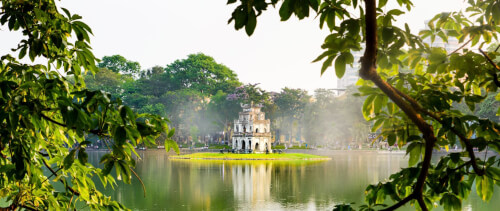 Hanoi (7)
Hanoi (7)
 Lao Cai (1)
Lao Cai (1)
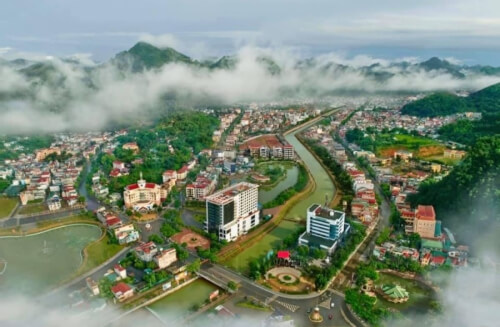 Son La (2)
Son La (2)
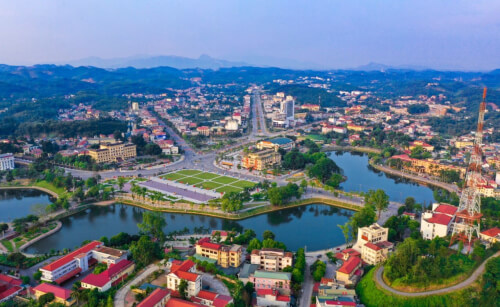 Yen Bai (1)
Yen Bai (1)
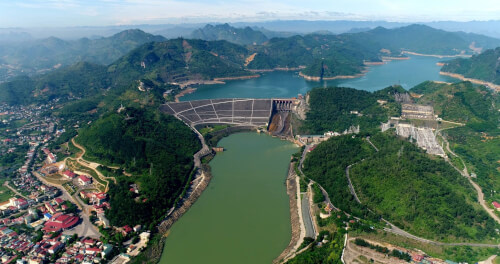 Hoa Binh (1)
Hoa Binh (1)
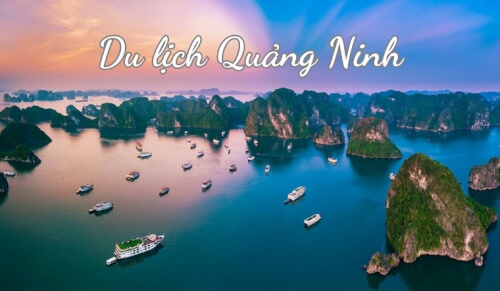 Quang Ninh (18)
Quang Ninh (18)
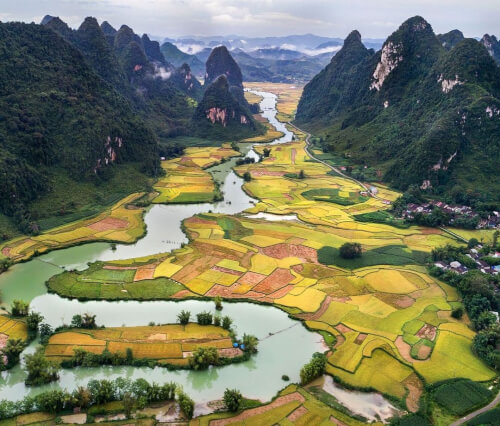 Ninh Binh (1)
Ninh Binh (1)
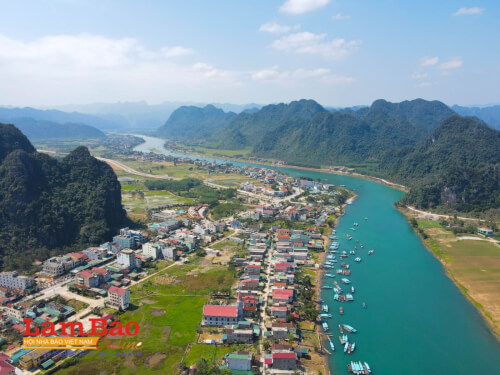 Quang Binh (2)
Quang Binh (2)
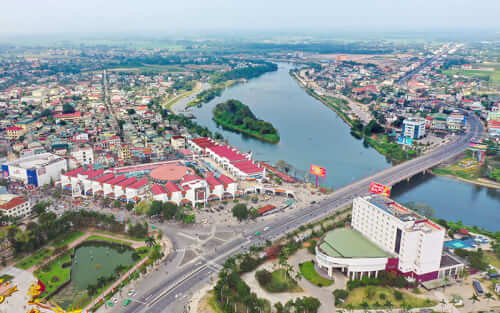 Quang Tri (1)
Quang Tri (1)
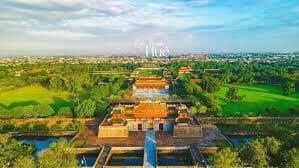 Hue (17)
Hue (17)
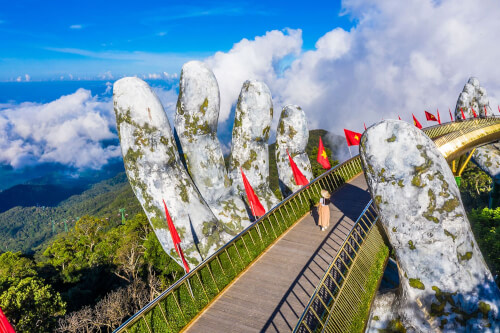 Da Nang (24)
Da Nang (24)
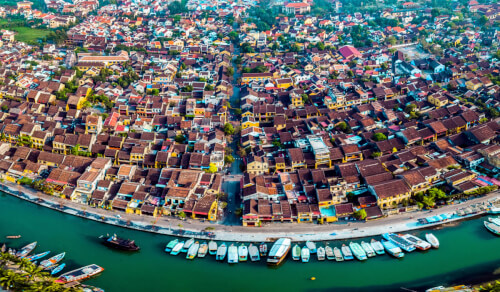 Quang Nam (16)
Quang Nam (16)
 Binh Dinh (1)
Binh Dinh (1)
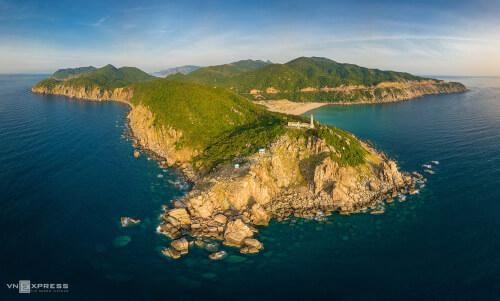 Phu Yen (1)
Phu Yen (1)
 Khanh Hoa (12)
Khanh Hoa (12)
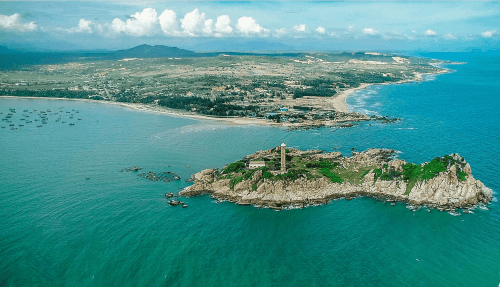 Binh Thuan (1)
Binh Thuan (1)
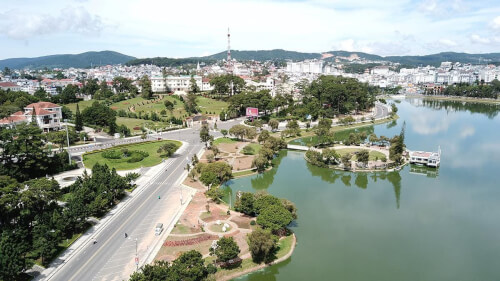 Lam Dong (7)
Lam Dong (7)
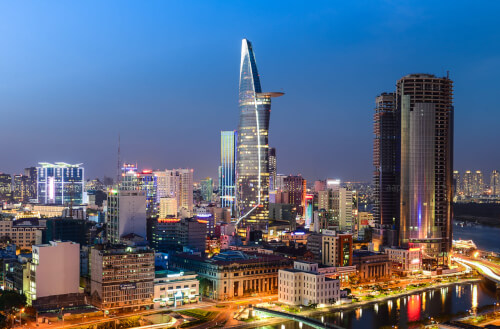 Ho Chi Minh City (3)
Ho Chi Minh City (3)
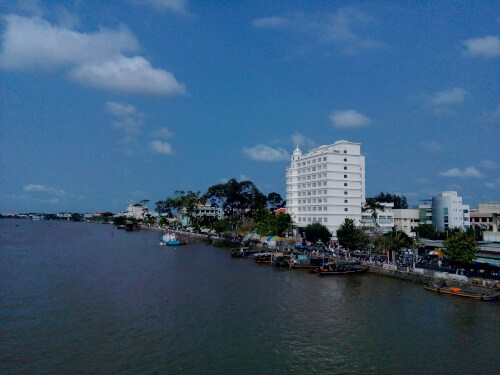 Ben tre (3)
Ben tre (3)
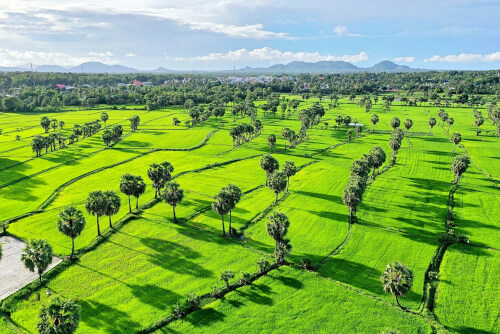 An Giang (1)
An Giang (1)
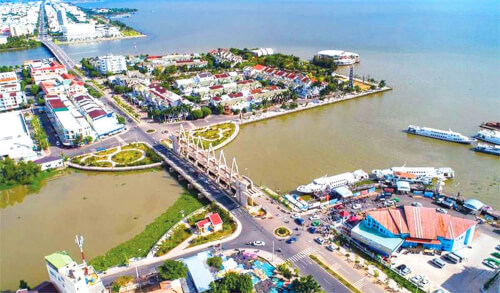 Kien Giang (4)
Kien Giang (4)
 Can Tho (3)
Can Tho (3)
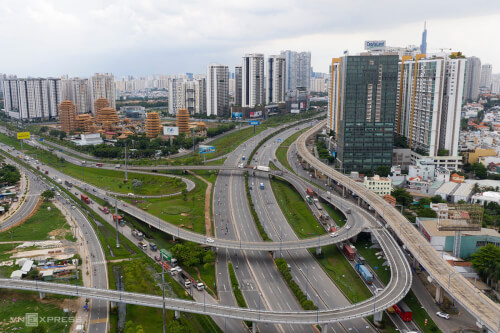 Foreign (3)
Foreign (3)

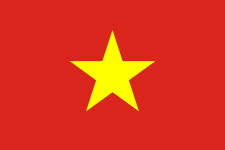 vn
vn en
en ja
ja ko
ko zh
zh


















